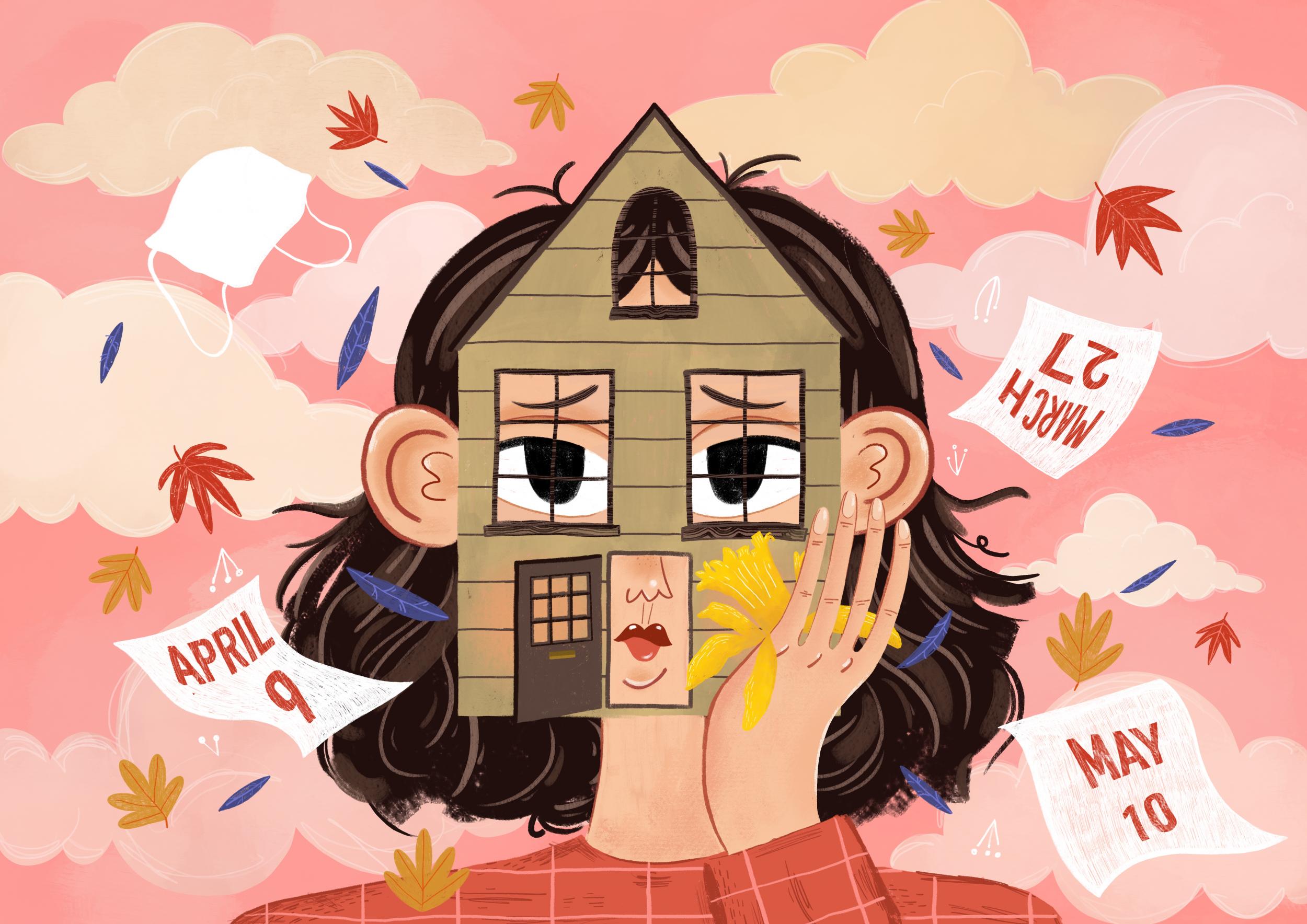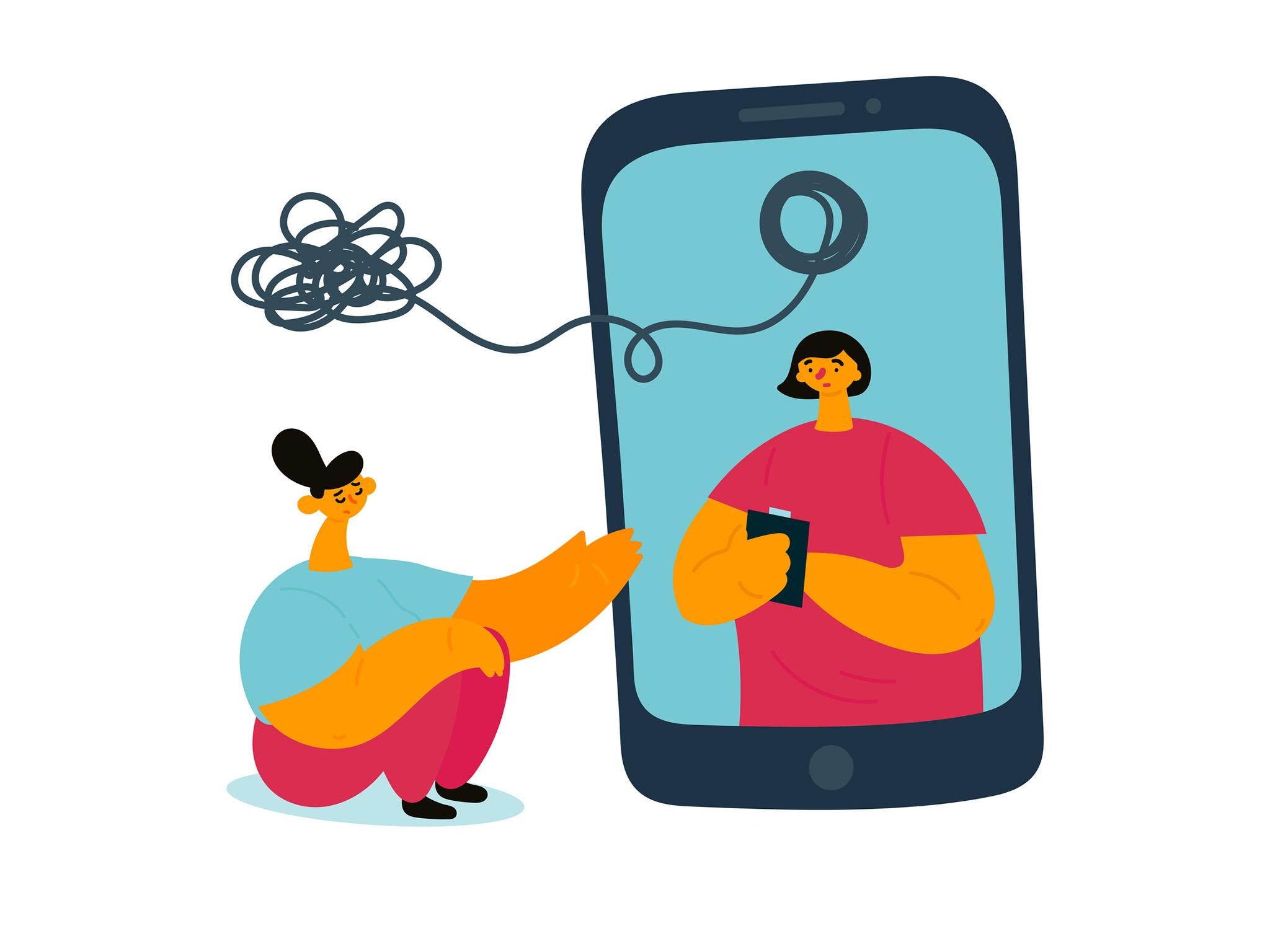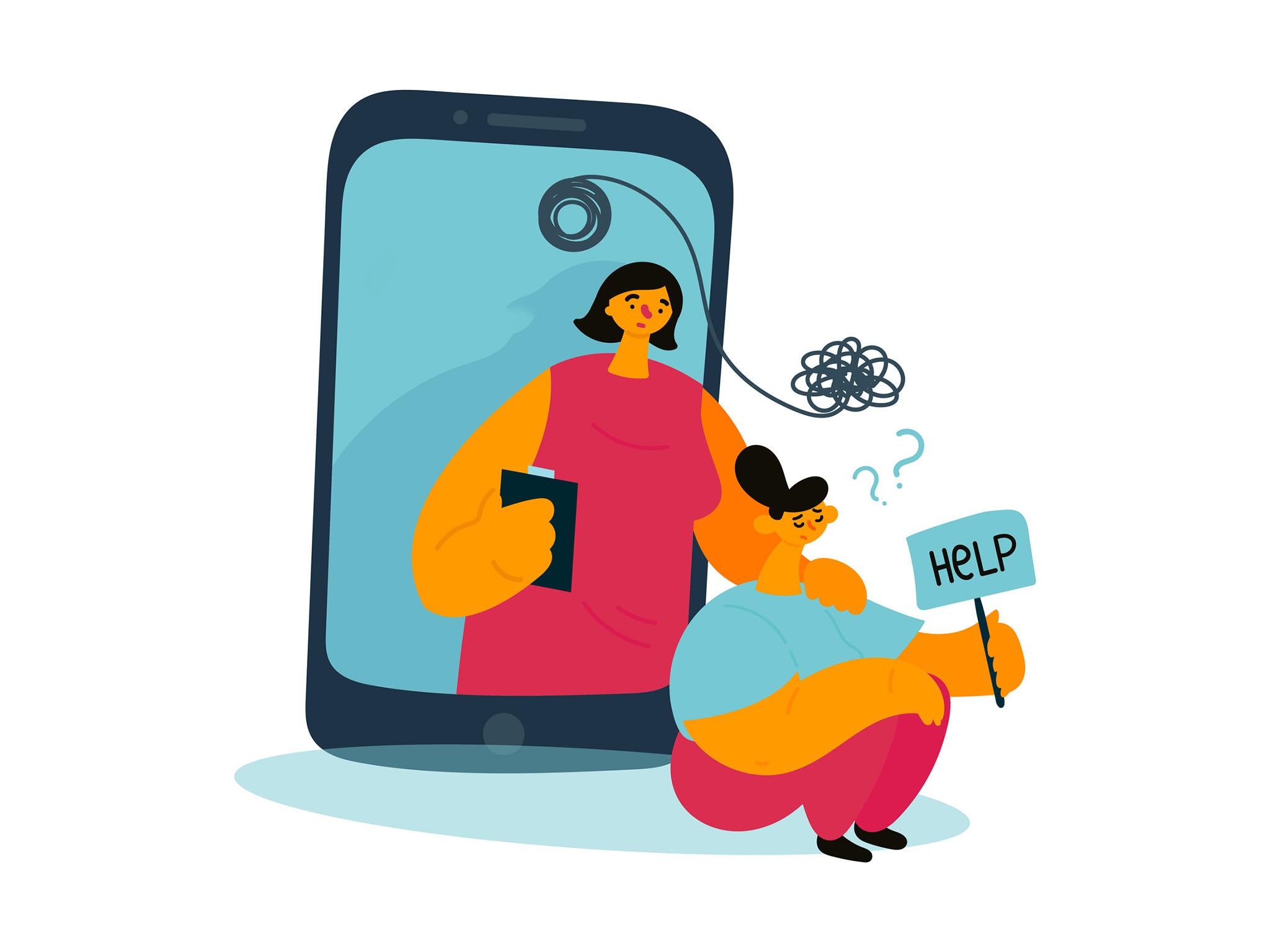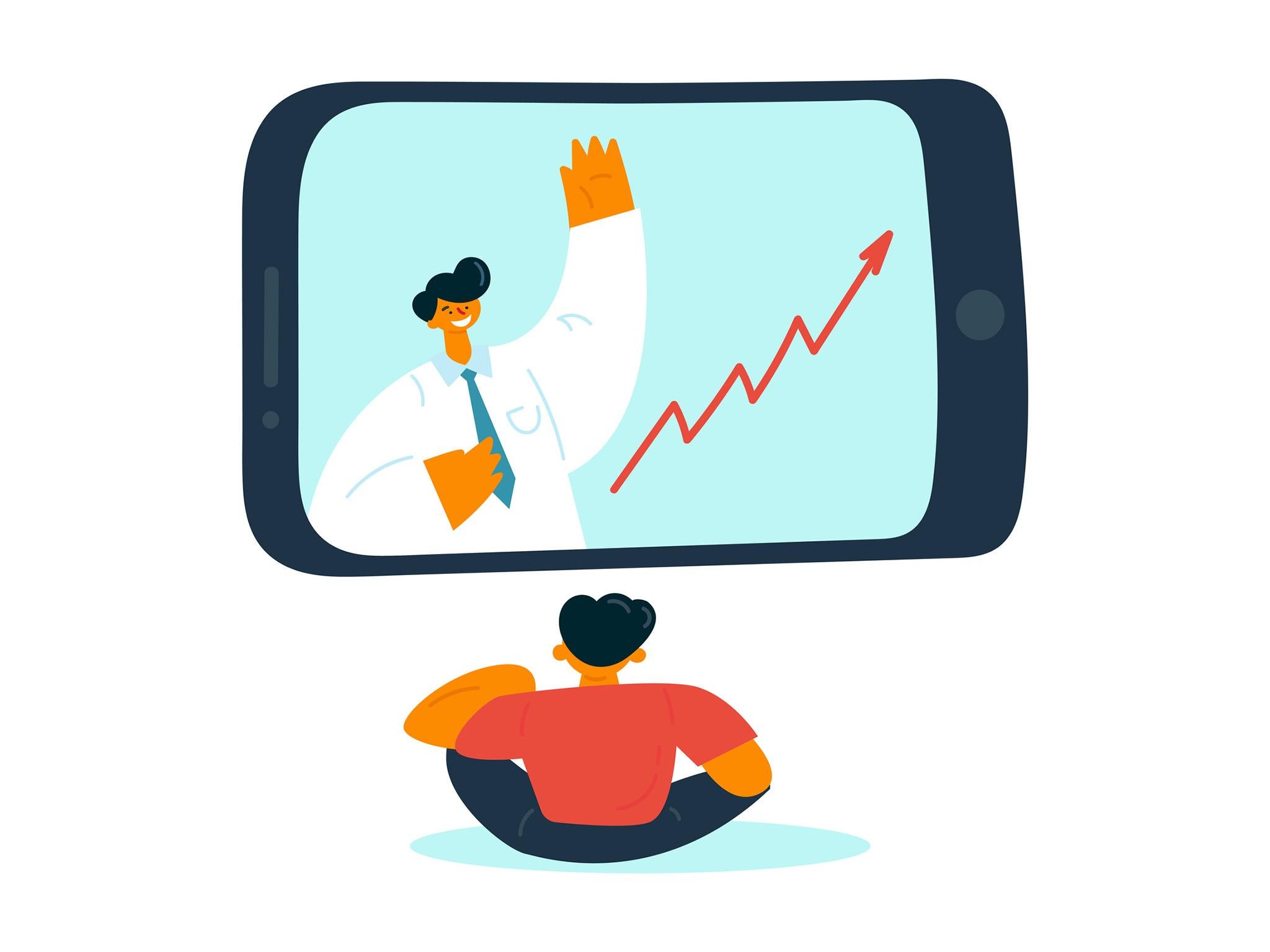Hey Siri, FaceTime my therapist: Can digital counselling ever be as effective as face-to-face therapy?
As the coronavirus lockdown continues to move all human contact online, Sam Hancock explores just how good Zoom, Skype and even WhatsApp audio voice notes are in the pursuit of worthwhile online treatment


Your support helps us to tell the story
From reproductive rights to climate change to Big Tech, The Independent is on the ground when the story is developing. Whether it's investigating the financials of Elon Musk's pro-Trump PAC or producing our latest documentary, 'The A Word', which shines a light on the American women fighting for reproductive rights, we know how important it is to parse out the facts from the messaging.
At such a critical moment in US history, we need reporters on the ground. Your donation allows us to keep sending journalists to speak to both sides of the story.
The Independent is trusted by Americans across the entire political spectrum. And unlike many other quality news outlets, we choose not to lock Americans out of our reporting and analysis with paywalls. We believe quality journalism should be available to everyone, paid for by those who can afford it.
Your support makes all the difference.From FaceTiming your doctor to signing in to your local GP at a machine, to being interviewed for a job on Skype and even dating someone through an app, the way we communicate with one another is evolving. In fact, a study by Oxford Economics last year showed that by 2030, machines, screens and robots will have “taken over” 20 million traditionally human jobs around the world. The manufacturing industry will be hit the hardest but as people continue to pick screen time over face-to-face communication, the online worlds of previously offline-only sectors, such as counselling, are set to flourish.
The NHS announced at the end of 2019 that over 300,000 patients in the UK now use digital forms of therapy, which range from online cognitive behavioural therapy (CBT) courses to patients “seeing” their therapists through various types of video software. For privately funded therapists, the numbers are even higher, with the majority now expected to offer their patients sessions via Skype and Zoom or even, as I’m told by one psychotherapist, WhatsApp audio voice notes.
Accessibility, time, cost and distance are some of the reasons both patients and therapists give for deciding to go digital. Unsurprisingly, the latest to be added to that list is coronavirus anxiety. As scientists still scramble to advise how people can best cope with germ-induced worries, online counselling has proven a vital resource. Hilda Burke, a psychotherapist, couples counsellor and author of The Phone Addiction Workbook, summed this up brilliantly when we spoke: “Some people can’t get to the consulting room – say if that person has agoraphobia or, more recently, if they’re afraid to leave their house for fear of contracting coronavirus – so why wouldn’t you offer them the chance to still speak to you, even if it’s through a screen?”
The term “digital therapeutics” first came into public consciousness in 2012 but, since then, one question has marred its seemingly progressive stance: can online therapy ever truly be as effective as face-to-face, or in-room, therapy?
Burke, who says she has no “fully digital” clients, only some whose lifestyle choices and jobs mean they can’t always commit to face-to-face sessions, began offering FaceTime and WhatsApp appointments to clients of hers when “the opportunity presented itself”. So much of being a therapist, she tells me, is building trust with your client, so to terminate a relationship with someone simply because they’re “unable to attend some in-room sessions would be completely counterproductive, for both the person I’m trying to help and myself”.
She adds: “I know a lot of therapists who would take that route, but it comes down to making a choice and I believe that if there’s still work to be done there, I’ve got a good relationship with that person, and the technology permits it, then I should do whatever I can to make our sessions work.”
Speaking to Burke, it’s clear that for all the positive things she has to say about digital therapy, her move to offer such services was one of convenience and opportunity, rather than any desire of her own to move online. And presumably, I ask her, this is because therapists prefer clients to be in the room with them. “I can’t remember the figure or where it comes from exactly, but I read once that something like 10 per cent of human communication is verbal,” she tells me, “while the other 90 per cent is done through body language, movements, and other gestures or signals – all of which are vital for a therapist to pick up on when they’re with a client.”
She adds: “I can tell a lot about a patient’s mood or state of mind from the second they walk in the room – like if they avoid eye contact, how they place their feet, if their hands won’t stay still, or if their facial expression tells me all I need to know – and, obviously, the issue with a screen is just that: there’s a screen between you and them, so a lot of my ability to read that person is restricted.”
Clara Hill, who is studying for a Masters degree in London, was referred to digital therapy on the NHS when her mental health deteriorated and began to affect her performance at work and university. Hill, who describes herself as a “very verbal person”, was assigned a weekly CBT worksheet and phone call with a therapist she had never met – and, she says, “would never recommend the service to anyone”.
The main benefit of digital therapy is convenience, but it’s true that the more emotional and underlying issues are what I’ve always explored in face-to-face therapy. Not digitally
“As much as I like to write, my favourite mode of communication is running my mouth, so this just didn’t work for me,” she says. “I kept forgetting to fill out the form and it felt like I didn’t have someone who got me – who knew my ticks, who knew how I held myself, who knew when I was lying or, weirdly, someone who laughed at my jokes. I just needed a real-life human.”
Hill, who’s originally from Scotland, says when she told her step-grandmother, who is a psychologist and regularly works with people suffering from mental illness, “she was appalled” by the NHS service. “I would never recommend it to anyone unless they were really desperate – and even then it’s a pithy attempt at making people better,” Hill tells me. “Mental health services in this country are a joke, and the overused narrative of ‘talking about it with a friend’ is pointless. Your friends are not mental health professionals, and have their own problems and a wrong, however well-meaning, reaction from them can be awful.”
Similar to Hill, Jo Threlfall experienced setbacks with digital therapy. Having first received in-room child bereavement counselling after the sudden death of her father, Threlfall was prescribed digital treatment when her mental health began to deteriorate as an adult. “Face-to-face is so much more beneficial when you’re lost or looking for help,” she says. “The power of in-room therapy has given me the confidence to be more outspoken and stand up for myself. I used to feel incredibly withdrawn and afraid to speak up, but now I’ve learnt that I have a voice and that I can use it in a powerful and useful way to help others.”
Burke, Hill and Threlfall all touch on the obvious setback of digital therapy: that people are not physically “seen”, and the consequences this can have on both therapist and patient. But this takes a whole new, rather dangerous, meaning when the person not being seen is someone whose issues are directly related to their appearance.

Francesca Baker, who has struggled with anorexia for 14 years, says for all digital therapy’s positives, the obvious problem for herself and others receiving counselling for an eating disorder is that it is “dangerous” how little your physicality is monitored through a screen. Baker, whose therapy history is broad and includes everything from being an inpatient and an outpatient to a day patient, and having acceptance and commitment therapy (ACT), cognitive analytic therapy (CAT), CBT, person-centred, humanist, psychodynamic, occupational, art and music therapies, says she decided to go digital when nothing else was working – and when “walking for over an hour to get to some counselling sessions was actually counterproductive to my eating and exercise habits”.
“I think it’s worth giving anything a go. I’m optimistic that one, or a combination, will work – and you always learn something,” Baker, who was prescribed monthly Skype calls, online videos and worksheets, which were all within an online portal, tells me. Although she isn’t convinced that it’s always a good idea. “While the main benefit of digital therapy is its convenience [and the fact] that I didn’t have to take time off work to speak to someone and could fit it around my life, it’s true that the more emotional and underlying issues are what I’ve always explored in face-to-face therapy. Not digitally.”
Baker received her online treatment as part of a clinical study by the NHS’ South London and Maudsley (Slam) Trust, which explored the benefits of providing anorexia patients, both in hospital and out, with digital therapy as opposed to in-room counselling. It was largely successful, recording an 85 per cent completion rate from those who chose to be on the six-week course. However, in its findings, the report says that those who withdrew from the study “felt less confident and hopeful to change” as a result of it and “found themselves engaging in binge and purging behaviours more frequently by the end of the study’s first week”.
The ability to slip back into old habits is clearly too easy when a screen is the only “person” you have to answer to. That’s what Jake*, who struggled with anorexia, bulimia and depression for almost five years of his life, tells me. Although he was never offered digital therapy, because doctors said his dwindling mental health and fast-decreasing weight meant he needed to be monitored closely and physically, Jake says he’s sure that if he had tried digital therapy it wouldn’t have worked for either him or the person on the other side of the screen.
“Going to therapy and being forced to go to therapy are two very different things,” he tells me. “My doctors and parents said if I didn’t go, I had to drop out of university, so I did – but that isn’t to say I said anything for a very long time.” Jake says he is “100 per cent sure” that had he been offered digital sessions he would have “ended the calls, pretended I lost signal – or done anything I could to avoid having to go through with them. Trust me, it would’ve been a lot easier, and way less awkward, than sitting in silence with a therapist in front of you for 45 minutes”.
Jake, who has been “in recovery” for well over a year now and hasn’t seen a therapist for some time, says while digital therapies wouldn’t have worked for him, and how he fails to see that it could for anyone dealing with an eating disorder, he agrees that the accessibility it allows some people “is all the proof you need to see that it’s a good thing – in the right situation”.
He adds: “It’s also important to think about access in terms of NHS waiting times. To this day, I’m yet to be referred to an eating disorder clinic in Manchester – a city I haven’t lived in since 2016. I’m lucky that my parents had the resources to put me in a private facility, but others aren’t. So if digital therapy means shorter waitlists, that’s also a huge advantage.”
According to a House of Commons briefing paper released in January, there were 1.6 million referrals made to NHS talking therapies in 2019, amounting to roughly 3.5 referrals for every 100 people in England aged 16 or over. While this is a marked improvement on referrals made in 2017, the report also details that almost half a million referrals ended before treatment had actually begun. And, according to the most recent NHS report on Referral to Therapy (RTT) stats in the UK, almost 90 per cent of patients wait more than three months to access NHS mental health treatment, while 2 per cent wait at least a year.
It’s important to think about access to therapy in terms of NHS waiting times. I’m lucky that my parents had the resources to put me in a private facility, but others aren’t. So if digital therapy means shorter waitlists, that’s a huge advantage
Huge waiting lists can make going private the only option – if you can afford it. According to Statista, a one-hour private session can cost up to £75. And while there may be 38,000 registered therapists in the UK, finding the right one for you (who’s not only within a reasonable distance, but also has space in their diary) can prove to be very difficult.
It’s no surprise, then, that people are turning to their phones – which act as a trusted source of information, and a gateway to opportunities otherwise unavailable – to receive more on-demand therapy.
In fact, counselling and crisis helplines have long been available through the medium of a phone. Dr Paul McLaren, consultant psychiatrist and medical director at the Priory Hayes Grove Hospital in Kent, says that while there are disadvantages to digital therapy that “must be acknowledged and understood”, it is perhaps time “we should be using the telephone more for therapy”. He tells me: “The Samaritans, and now text services such as Shout, have been using it for support for the most vulnerable for a long time. Ultimately, more access means more therapy and that has to be a good thing.”
Shout, which was set up in the US in 2017 and came to the UK in May 2019, is a 24/7 crisis text service, which is free, confidential, anonymous and won’t appear on someone’s phone bill. Victoria Hornby, CEO of Shout, says a lot of the feedback the service gets from texters “is that it’s sometimes easier for them to text in the first instance, rather than speak to someone on the phone or in person”. According to Hornby, once someone has had that initial chat with Shout, they find it can help them to take that conversation to a family member, a friend, a GP or a teacher, and get the next steps of support that they need.

She adds: “One in four adults will experience a mental health crisis in any given year. Since we launched, we’ve taken more than 230,000 conversations on a range of issues across suicidal thoughts, anxiety, depression, loneliness, bullying and relationship problems among others.” While Shout is not digital therapy, its extremely popular service shows the power that the safety blanket of a phone can give to a person looking for support.
Julia Samuel, a leading psychotherapist and author of This Too Shall Pass, says she has offered digital therapy to clients since it was technologically possible. “There is absolutely no reason you can’t connect with someone over the phone like you can when they’re in the room,” she tells me. “Of course there are differences, but you can see their face – often much closer than you can when they’re in the room, hear their voice and read their emotions.”
Samuel says she has many patients whom she has never, and will never, meet – but they’re people she still “has fantastic relationships with”. One patient, she says, is an elderly lady who lives “in the middle of nowhere” and wouldn’t be able to access therapy at all if it wasn’t for Skype, Zoom (“which is what I use, it’s by far the best quality – much better than Skype”) and WhatsApp video calling. “There are also the benefits people fail to mention, mostly that I get the chance to see where they live; their bedroom, or kitchen, or living room, sometimes even their partner or children might make an appearance – and that tells me something about them which I perhaps didn’t know before.”
There are benefits to online sessions people fail to mention, mostly that I get the chance to see where they live; their bedroom, or kitchen, or living room, sometimes even their partner or children might make an appearance – and that tells me something about them which I perhaps didn’t know before
There are three big hurdles when it comes to therapy, in terms of access, Samuel tells me: time, money and availability. “While the cost doesn’t always differ when it comes to digital sessions, what screen time has done for time and availability is revolutionary – for both us as therapists, and for our patients.”
Speaking about therapy’s “biggest barrier of all”, Samuel says the inability someone might feel to go and sit in a room with a total stranger and talk about their feelings is exactly why digital therapy is so important. “What you want to do as a therapist is knock down as many barriers as you can, as quickly as you can preferably, to make your relationship with the person you’re speaking to as strong and easy as possible,” she tells me. “And it just so happens that today, that means we have to accept that in-room therapy isn’t always an option for some people – and that’s no bad thing.”
Tally Fosh, who had been in therapy since the age of 11 before she tried Skype sessions as an adult with a therapist who lived abroad, says the convenience of digital counselling is by far the reason for its rise in popularity. “I don’t think face-to-face therapy can ever, or should ever, be replaced because there’s such value in it,” she tells me, “but there’s also value in making therapy work for you, which digital allows more of.”
Fosh, who is now a qualified psychotherapist herself and has set up her own digital practice, Therapised, says therapy has saved her life in many ways. “Mostly it has given me the opportunity to find a sense of self that I never used to have. It gives me the support to delve deep into the unknown of feelings and fears I never thought I could possibly work through,” she says.
But, Fosh stresses, therapy doesn’t always have to be really intense and eye-opening. Part of her reasoning for starting Therapisied was to “take the stigma out of therapy” – to break down the belief system that says having a therapist means you are completely broken, or twisted, or suffering. And this, Fosh says, is where digital therapy really helps.
“There are times when, actually, we just need to be listened to and acknowledged. I think it’s important for those who want to try therapy but don’t think they have a pressing issue, to give it a go,” she says. “I always say that having weekly therapy is like going to the gym. Our mind controls so much of what we do and without a healthy mind, we are unable to actually do the things we want or be the person we want.”
Digital therapy is more than just convenience, then, and instead, it is an opportunity for people to dip into a practice they might have preconceived notions of. Accessing therapy through your phone and in the comfort of your own home, with your partner or friend sat next to you, could perhaps silence the klaxon that sounds in your head when you think about going to a therapist’s consultation room. That’s the hope, anyway.
Like Fosh, Nicci Wright had such good experiences with digital therapy that she has since begun working in the industry. Wright says getting access to digital therapy, which for her started with Skype sessions before she found The Circle Line, a dedicated online therapy platform and where she now works, allowed her to bypass the “uncomfortable feeling” of having to ask her former boss “to leave work early so I could go to therapy”.
“I didn’t want it to taint his perception of my ability to do my job, so taking time out of my day, leaving early or making an excuse felt uncomfortable. This was a few years ago when nobody was talking about therapy or mental health in the way people do now,” she tells me. “I think my manager at the time would have felt having therapy equalled having some mental illness, due to his own naivety. Whereas now people are generally more open about mental health and therapy, so it doesn’t bother me.”

Although in-room therapy has helped her in many ways, Wright says its biggest drawback is that when the session is over, you have to readjust out of that safe space and into the world again in such a short space of time. “It’s always alarming: you’ve been baring your soul to someone and then suddenly have to get on a crowded bus with tear-stained cheeks,” she says. “Whereas therapy at home, where you are peaceful and relaxed, lessens that adjustment period, and avoids public exposure and embarrassment.”
Despite all of this, though, Wright says she does “generally prefer in-room therapy” because of the personal breakthroughs it has given her. Although, she quickly counters: “I do really believe that can happen with the right therapist online as well. It’s your relationship with your therapist that is key.”
When I put these ideas to Dr Jonathan Pointer, a chartered clinical psychologist, psychotherapist and hypnotherapist, he says there is “research that has established the efficacy of conference video therapy (such as Skype/ FaceTime) with treatment outcomes, and shown that it is at least equal, and sometimes even more effective, than the traditional in-office, face-to-face setting”.
And he isn’t wrong. A study from 2013 called “Acceptance Based Behaviour Therapy for Social Anxiety Disorder through Videoconferencing”, which was published in the journal Anxiety Disorder, concludes that of its 24 participants 100 per cent benefited from the 12-week online counselling programme. The report states: “Analyses revealed significant improvements in social anxiety, depression, disability, quality of life, and experiential avoidance, with effect sizes comparable to or larger than previously published results of studies delivering in-person CBT.”
I rely on my body as well as my brain to listen to my clients and pick up on where they are at. I find I rely on clients’ descriptions of their emotions more when working digitally, whereas in person you can sometimes pick that up with very little description required
Pointer, who has been offering exclusively digital therapy at his practice for two years, highlights that this success is true for mostly cognitive-behavioural therapies because they have a large “psycho-educational element that works very well over video calls”. While there are instances when digital therapy should not be offered in place of face-to-face treatment, such as “when someone is working within the psychodynamic element”, Pointer tells me, video calling therapy has undoubtedly helped him to develop his work.
This idea that digital therapy has transformed traditional counselling, adding to it rather than taking away from it, is something Dr Rachel Allan, a counselling psychologist, says she has found beneficial to her work. “In psychology, we talk about the therapeutic space, and I like the shifting concept of therapeutic space that comes with digital therapy,” she tells me. “Rather than being a physical environment, the therapeutic space is held across the digital connection, and only exists when the client and therapist are in contact for that therapeutic hour. I can see how that appeals to some clients. And it makes sense for [therapists] to be open to redefining the therapeutic space to reflect the digital age.”
Allan does, however, say that the main challenge with digital therapy is that she cannot share the same physical space as her clients. “I rely on my body as well as my brain to listen to my clients and pick up on where they are at. You don’t always get the same connection when seeing someone through a screen,” she says. “I find I rely on clients’ descriptions of their emotions more when working digitally, whereas in person you can sometimes pick that up with very little description required.”
Ultimately, though, Allan says digital therapy allows people greater freedoms. Some people, she tells me, prefer to “seek therapy from someone who is totally removed from their own community”, which is one the many benefits in-room counselling cannot offer without forcing someone to sacrifice additional money on travel costs.
As with all mental health services and treatment, the efficacy of digital therapy is completely case dependant. It’s hard to determine whether it is as effective as face-to-face therapy, although it’s clear that the majority of people do believe in-room sessions have a certain closeness that a screen simply can’t replicate. But the fact is, we live in a technologically advanced world in which people are always looking to digital services to make their lives that little bit easier. Especially when it comes to communication.
Take me at this very moment. While writing this article, I’ve composed and sent texts using Siri so I didn’t have to stop typing; I’ve spoken to my girlfriend, from Edinburgh, on FaceTime; and I’ve asked Alexa to “turn Maggie Rogers down to volume three”. Yet I haven’t moved from my seat.
The expectations we have for digital services, particularly ones that transform the way we can connect with others, are only going to get higher. With that in mind, and the fact that digital therapy allows more people access to treatment they might otherwise not have, the question shouldn’t be: “Can digital counselling ever be as effective as face-to-face therapy?” Instead, it ought to be: “Should we ensure that digital counselling is as effective as face-to-face therapy?” And to that, the answer is unequivocally yes.
*Some names have been changed.
If you are suffering from any of the issues discussed in this article, you can text Shout on 85258 or call Samaritans on 116 123
Join our commenting forum
Join thought-provoking conversations, follow other Independent readers and see their replies
Comments